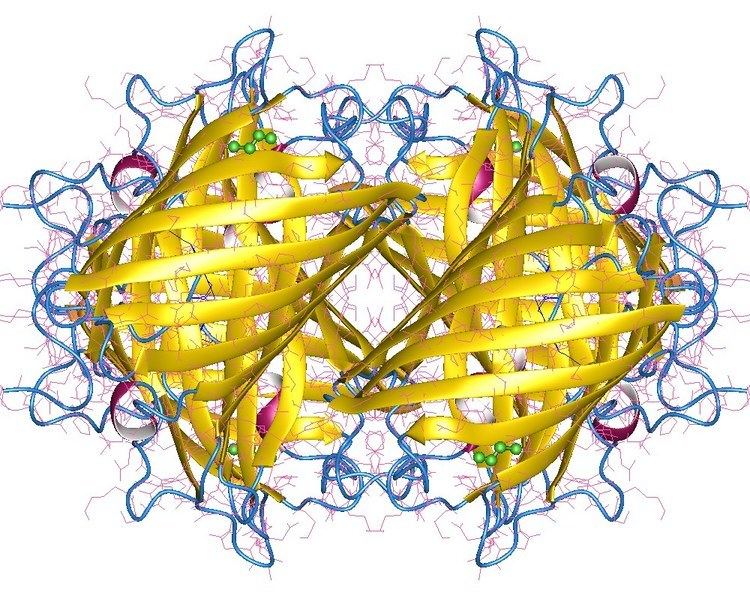 | ||
Yellow fluorescent protein (YFP) is a genetic mutant of green fluorescent protein (GFP) originally derived from the jellyfish Aequorea victoria. Its excitation peak is 514 nm and its emission peak is 527 nm. Like the parent GFP, YFP is a useful tool in cell and molecular biology thanks to its properties useful for fluorescence microscopy.
Three improved versions of YFP are Citrine, Venus, and Ypet. They have reduced chloride sensitivity, faster maturation, and increased brightness (defined as the product of the extinction coefficient and quantum yield). Typically, YFP serves as the acceptor for genetically-encoded FRET sensors of which the most likely donor FP is monomeric cyan fluorescent protein (mCFP). The red-shift relative to GFP is caused by a Pi-Pi stacking interaction as a result of the T203Y substitution introduced by mutation, which essentially increases the polarizability of the local chromophore environment as well as providing additional electron density into the chromophore.
"Venus" contains a novel amino acid substitution –F46L– which accelerates the oxidation of the chromophore at 37°C, the rate limiting step of maturation. The protein has other substitutions (F64L/ M153T/ V163A/ S175G), permitting Venus to fold well and giving it relative tolerance to acidosis and Cl−.
